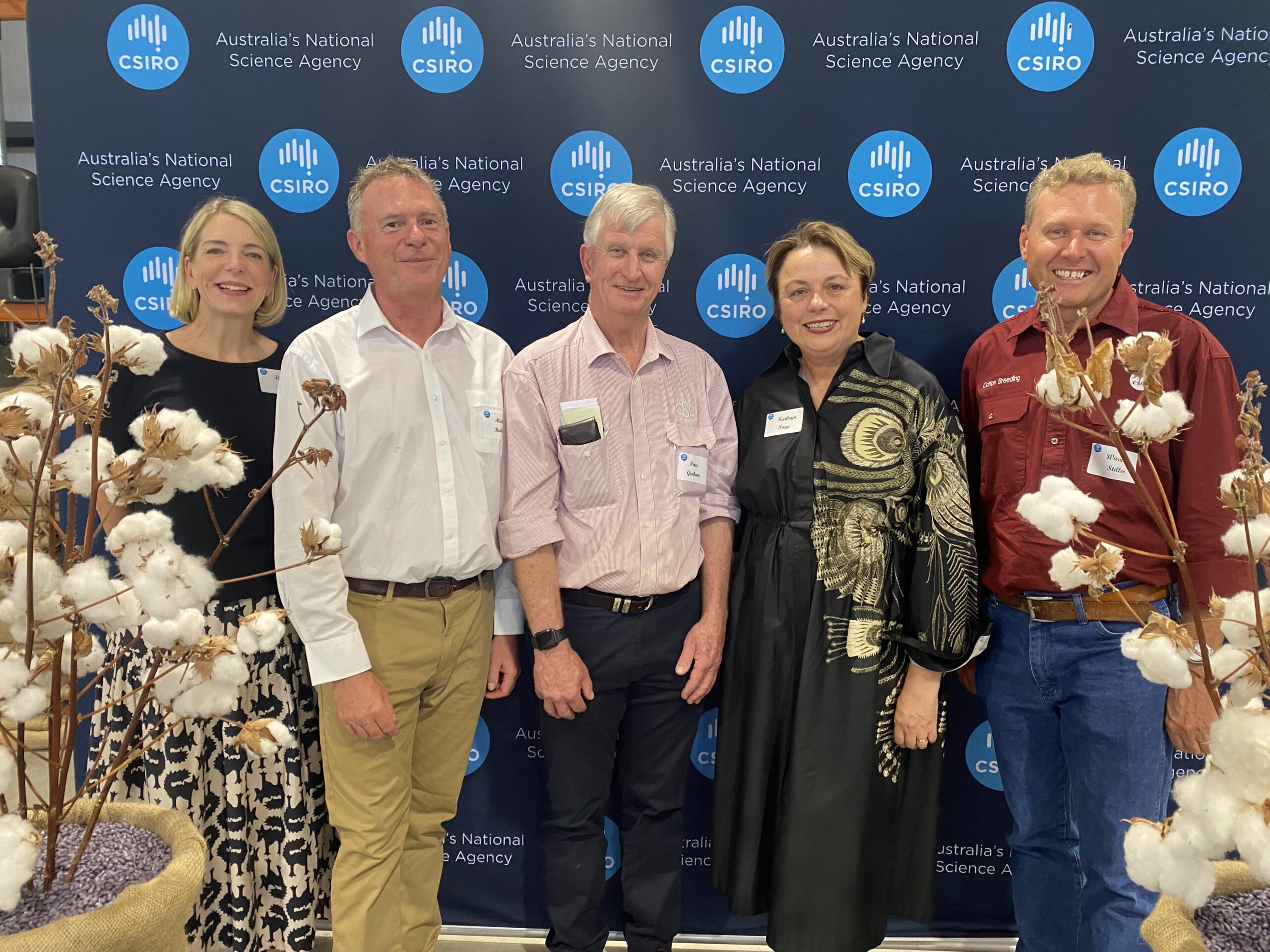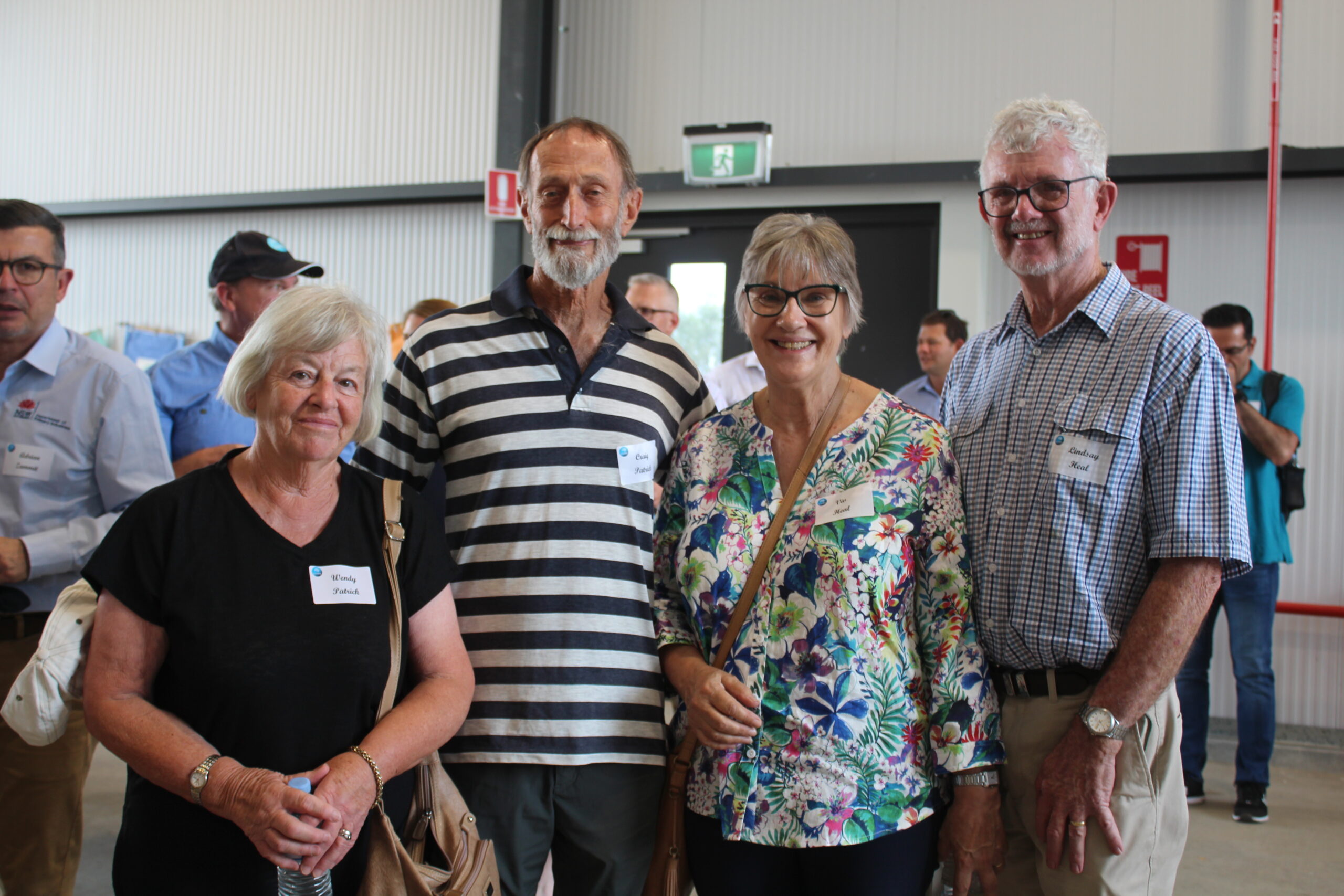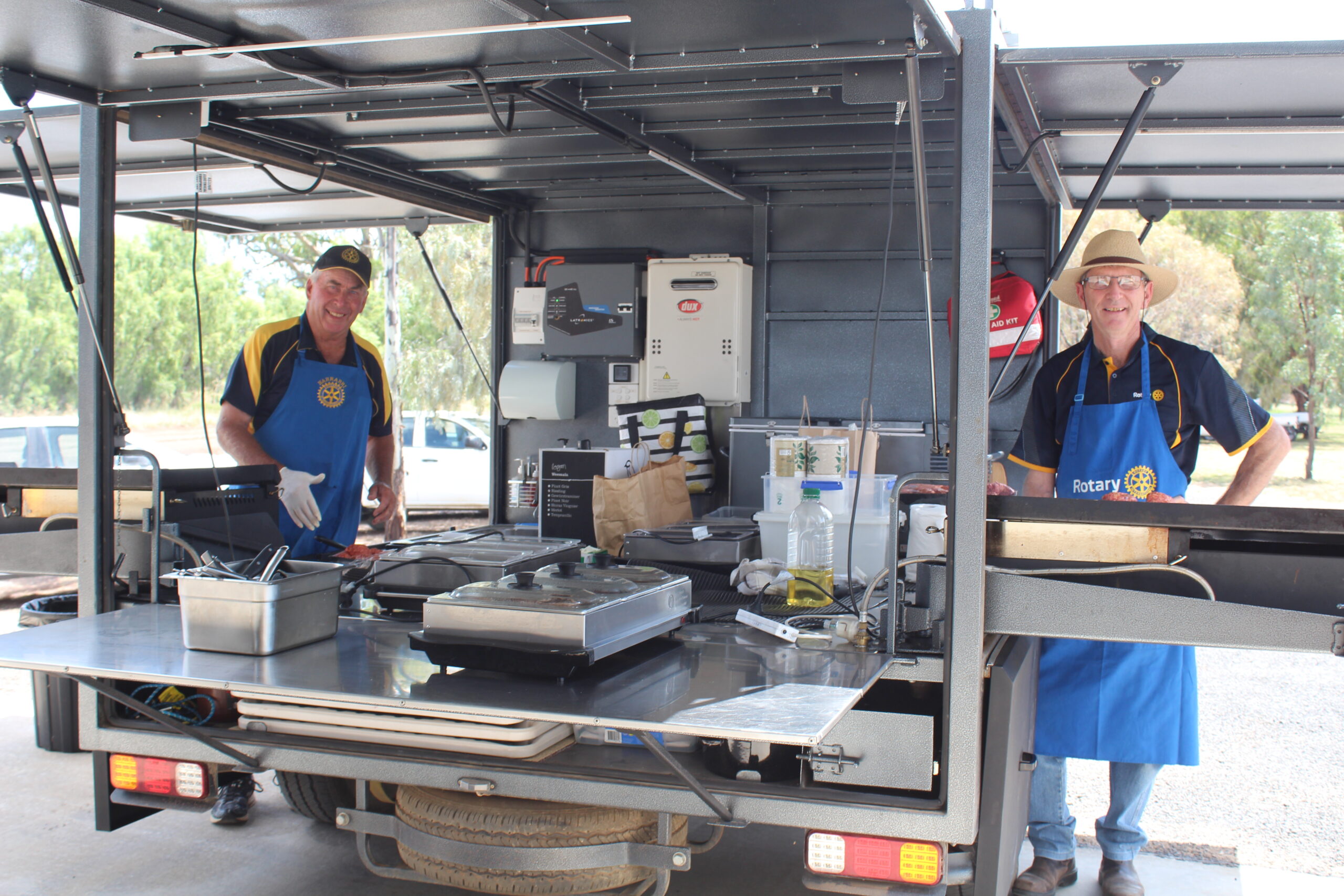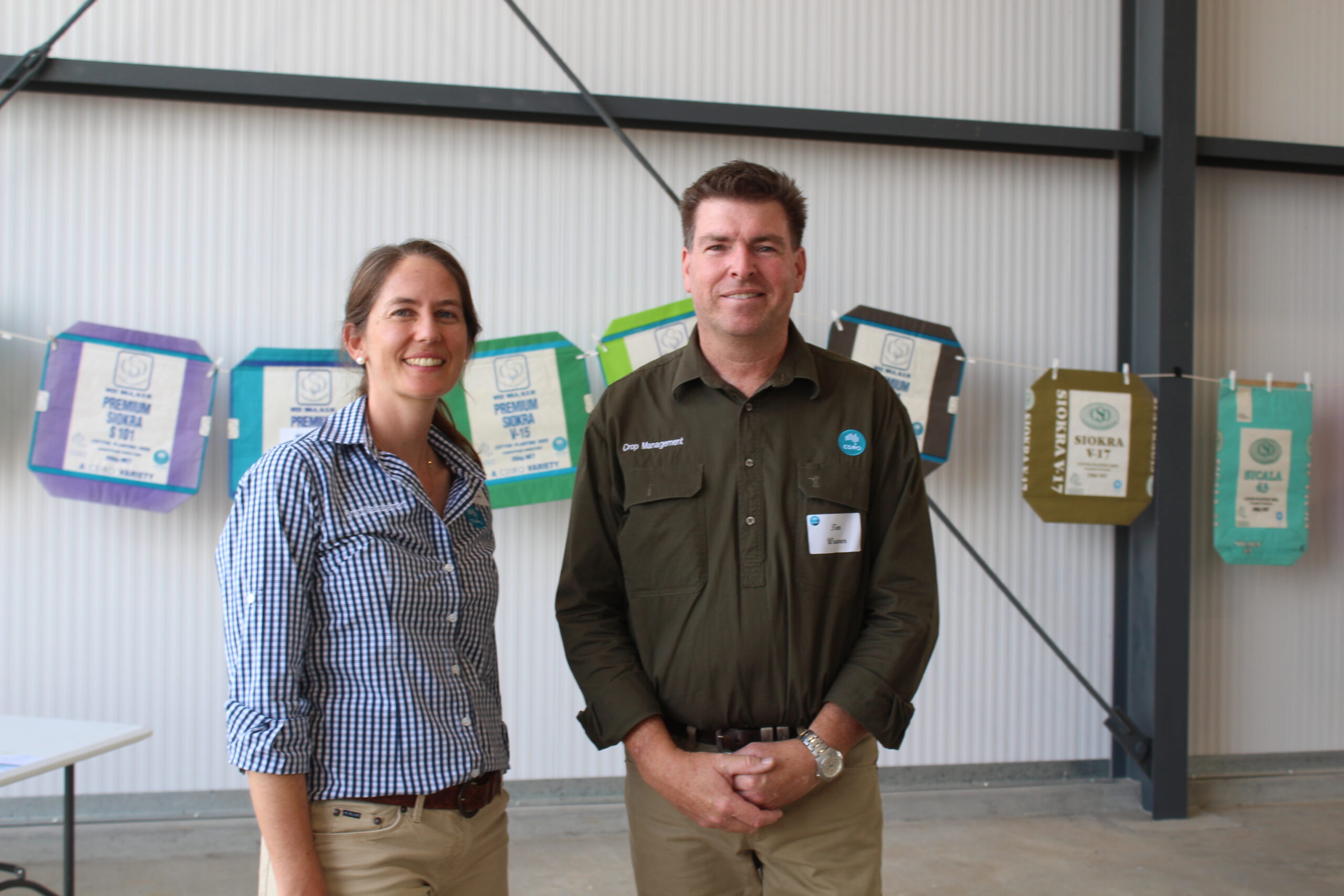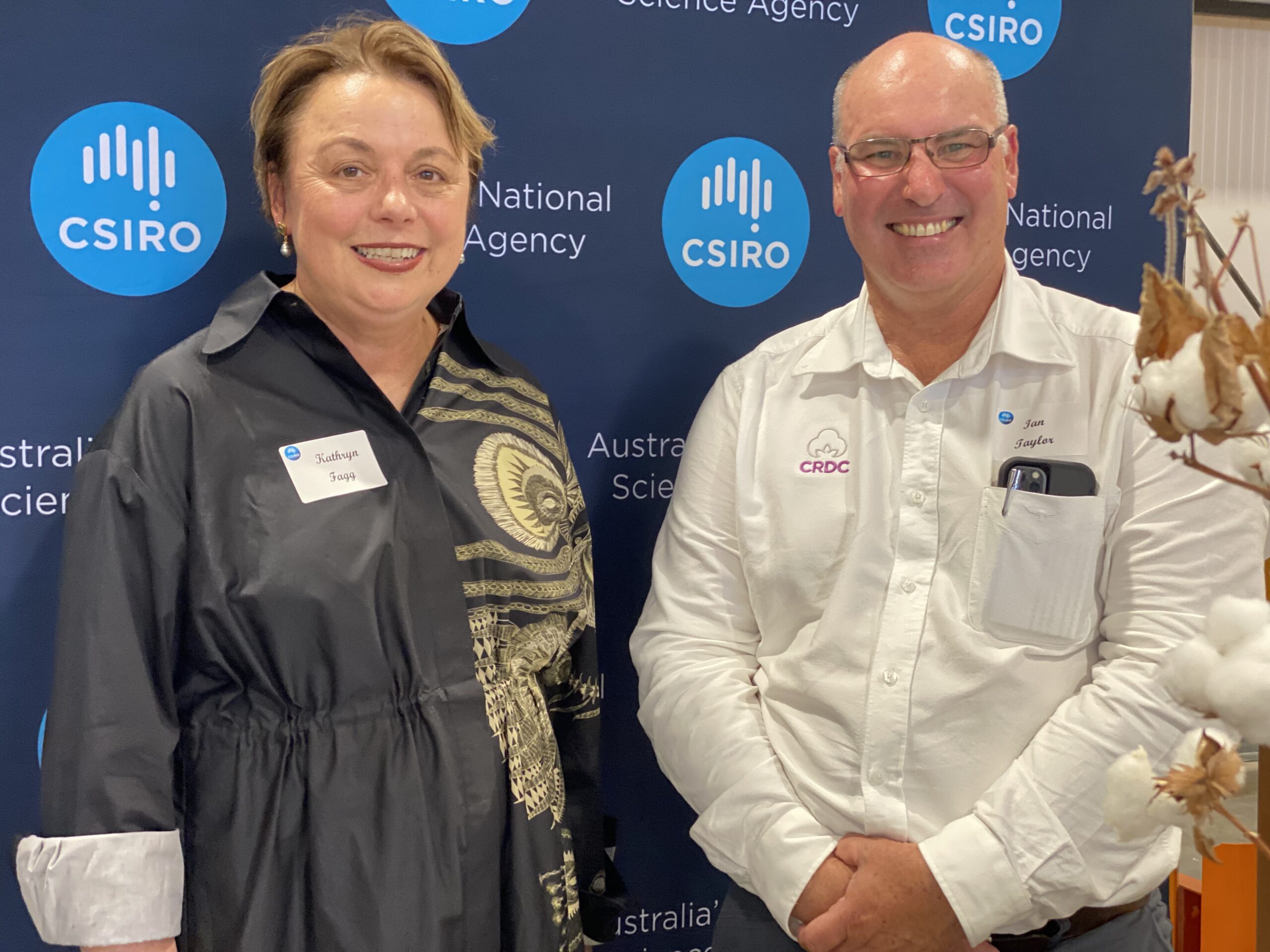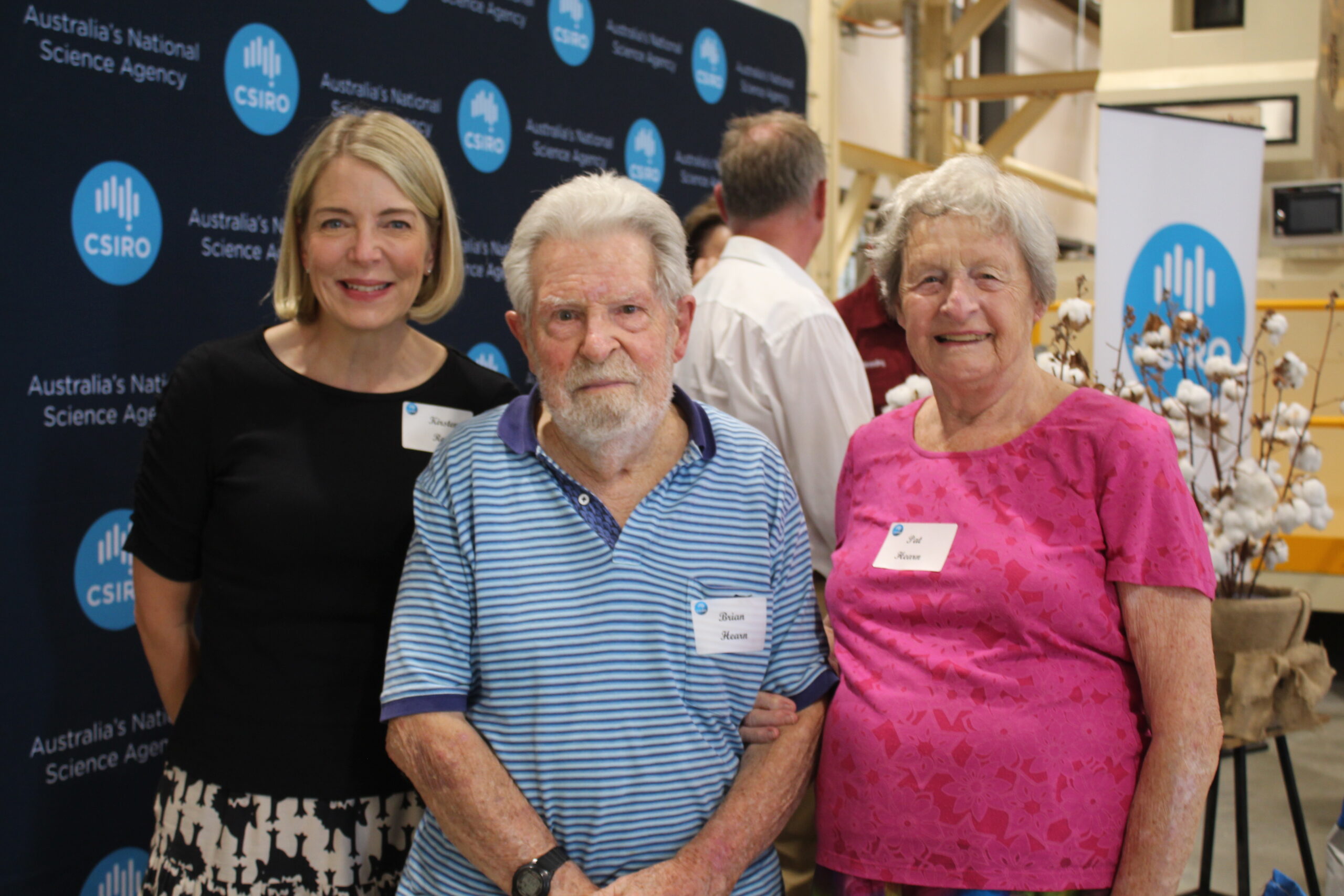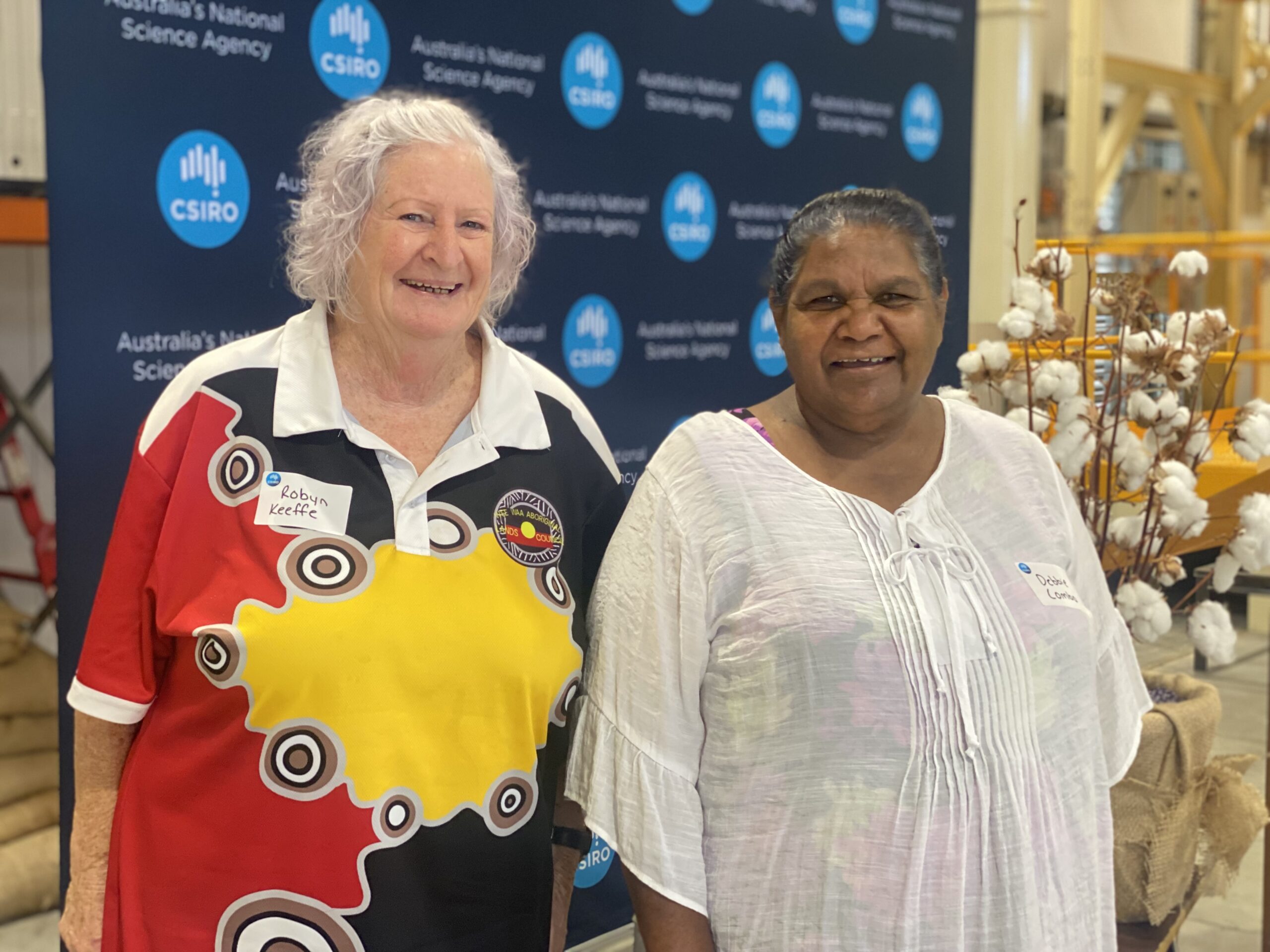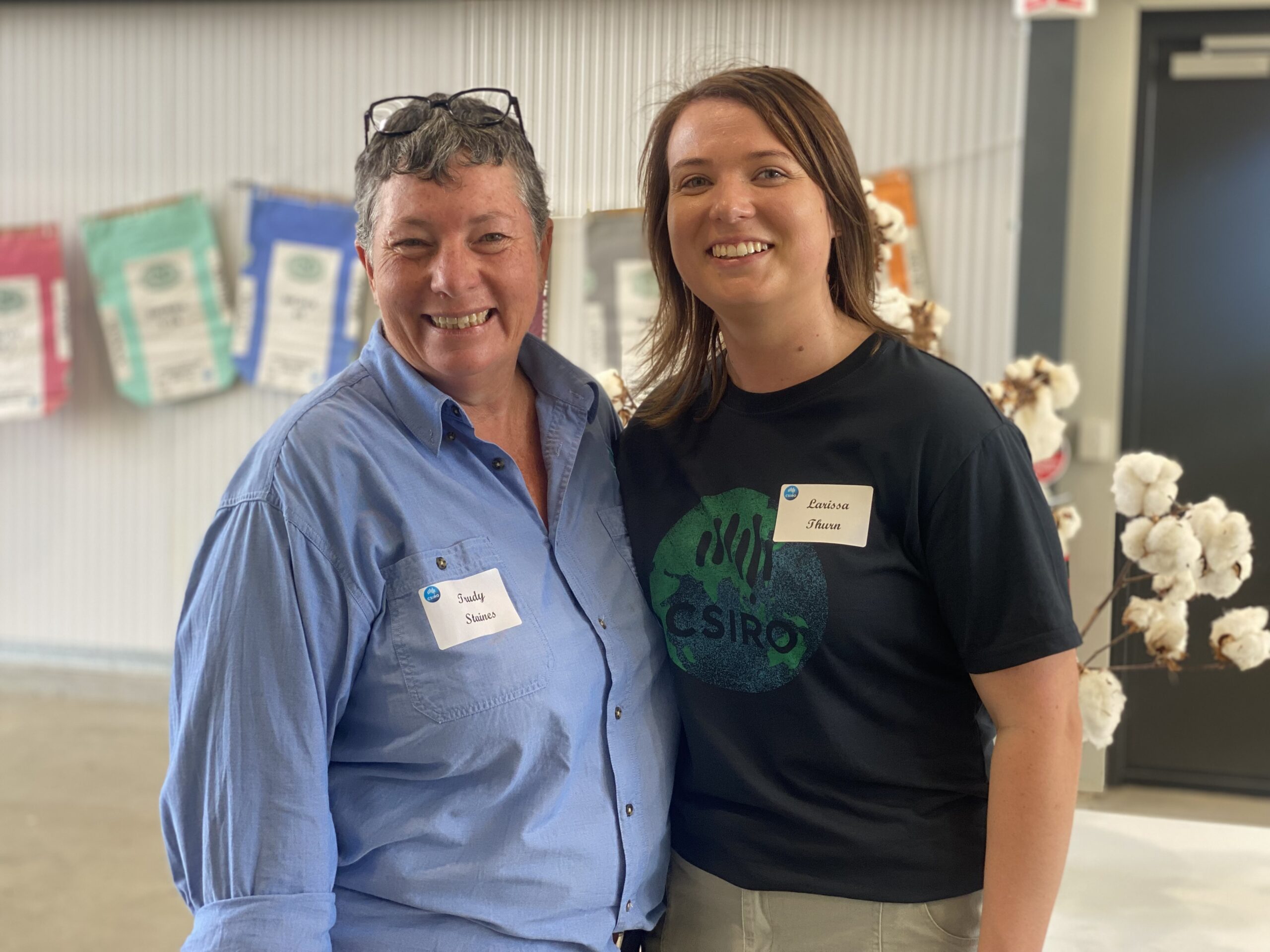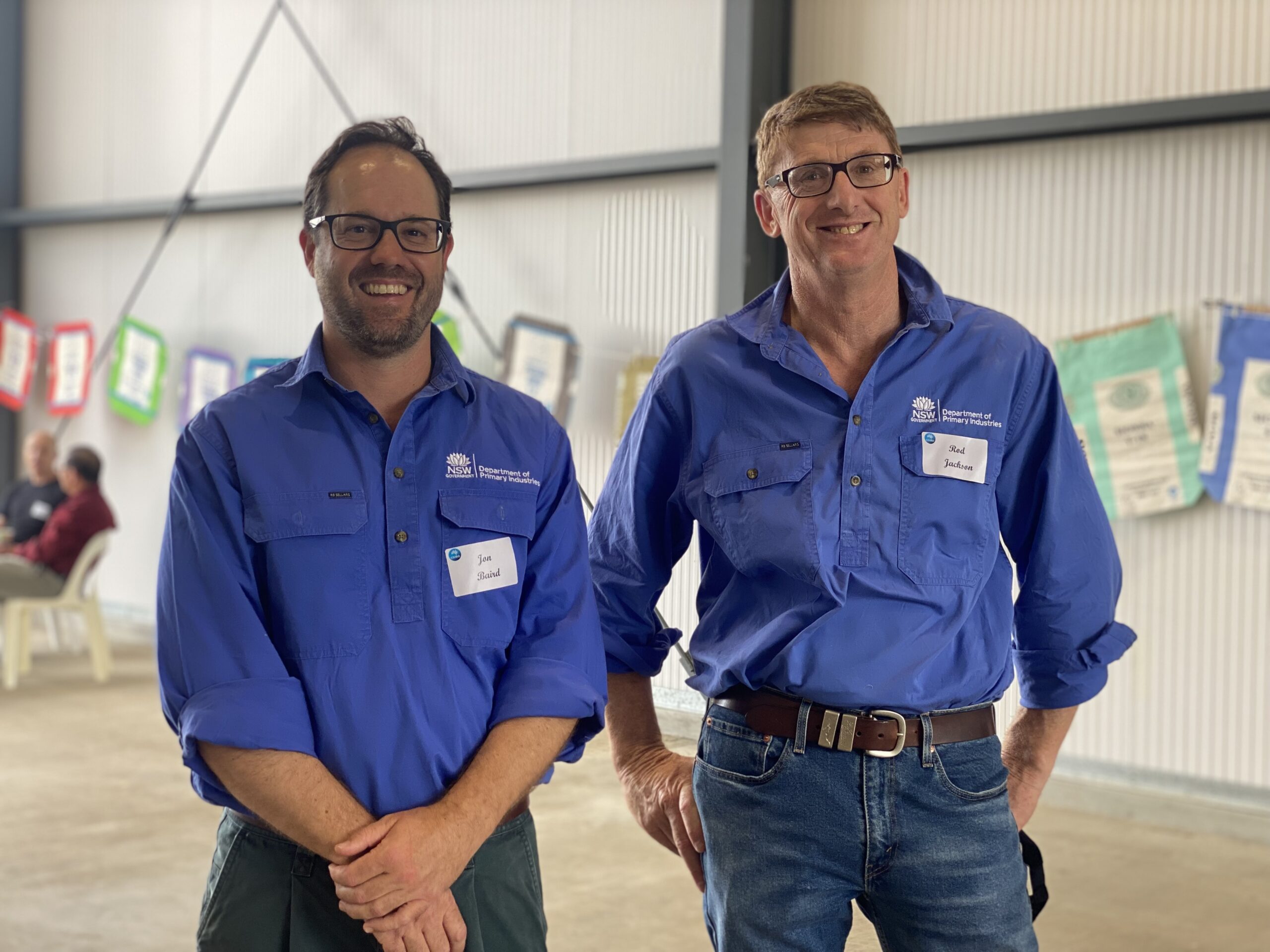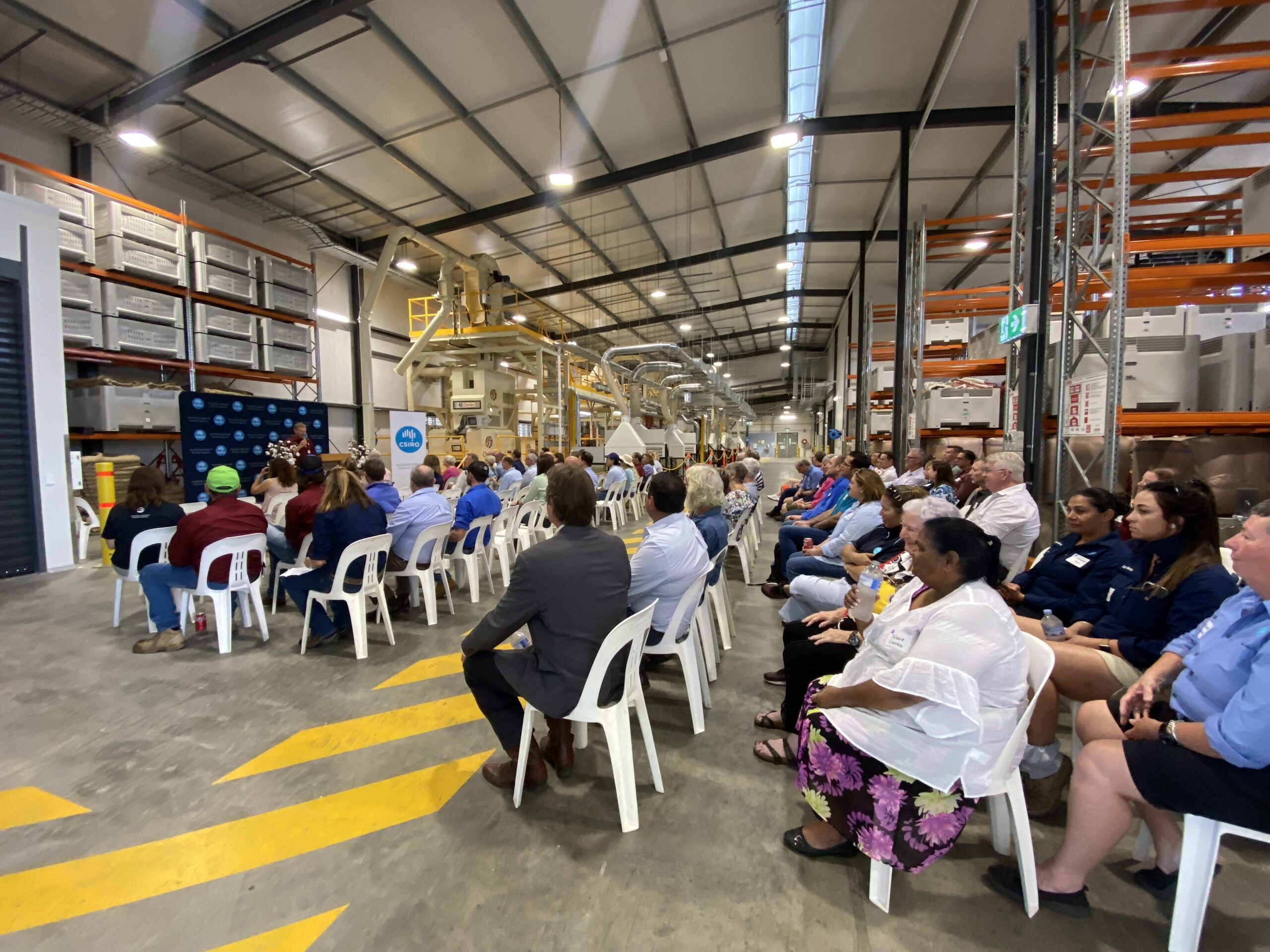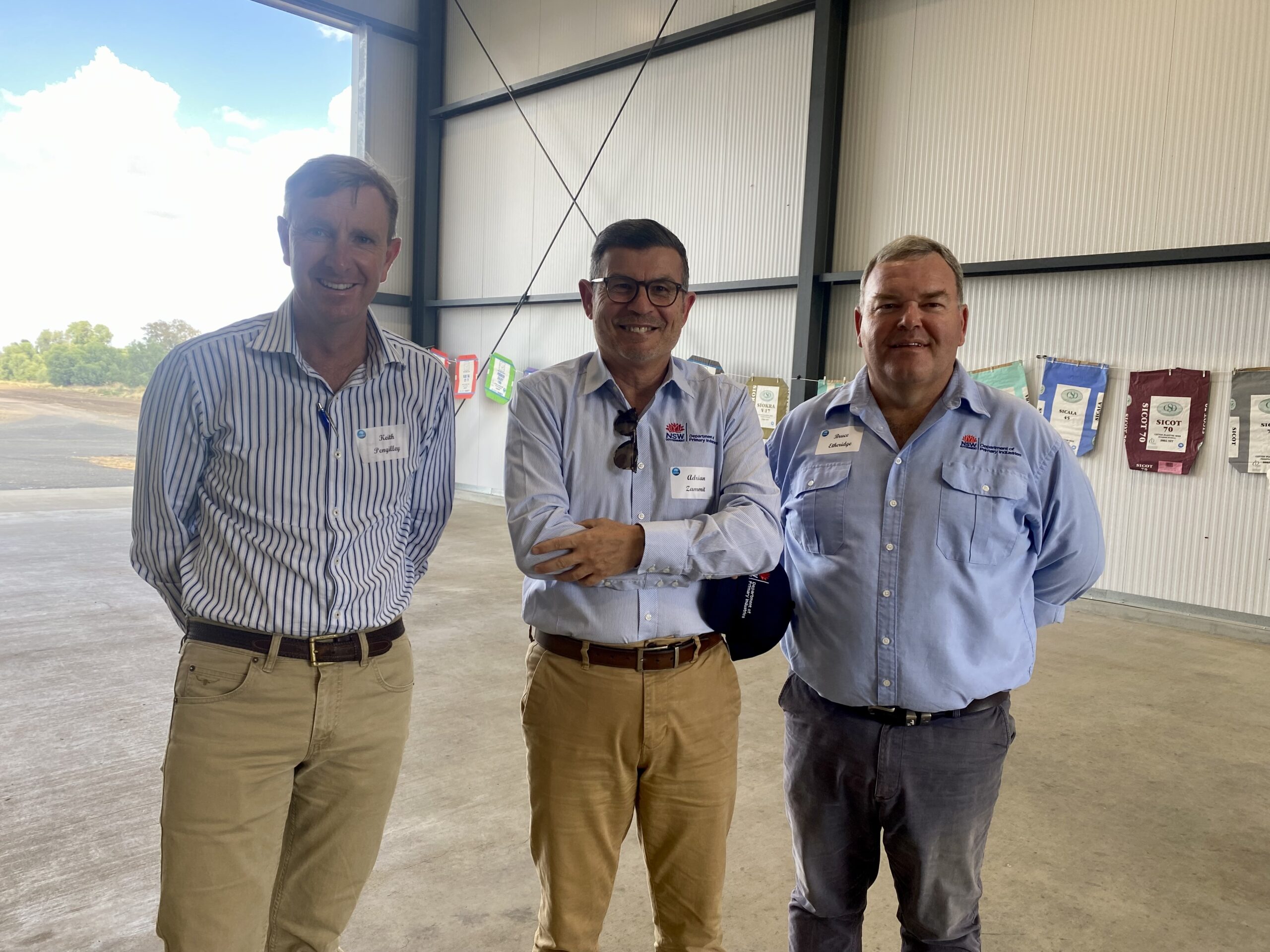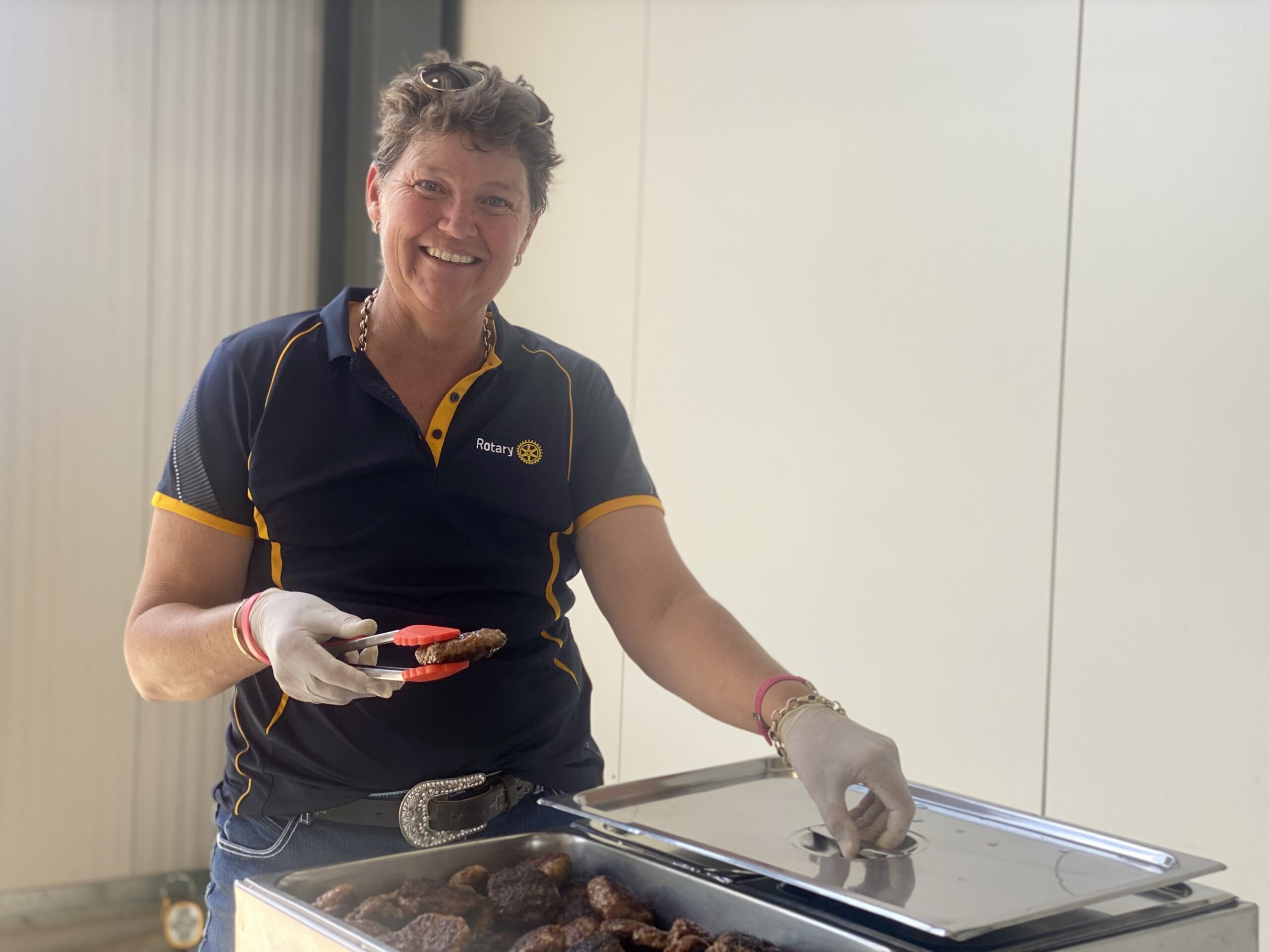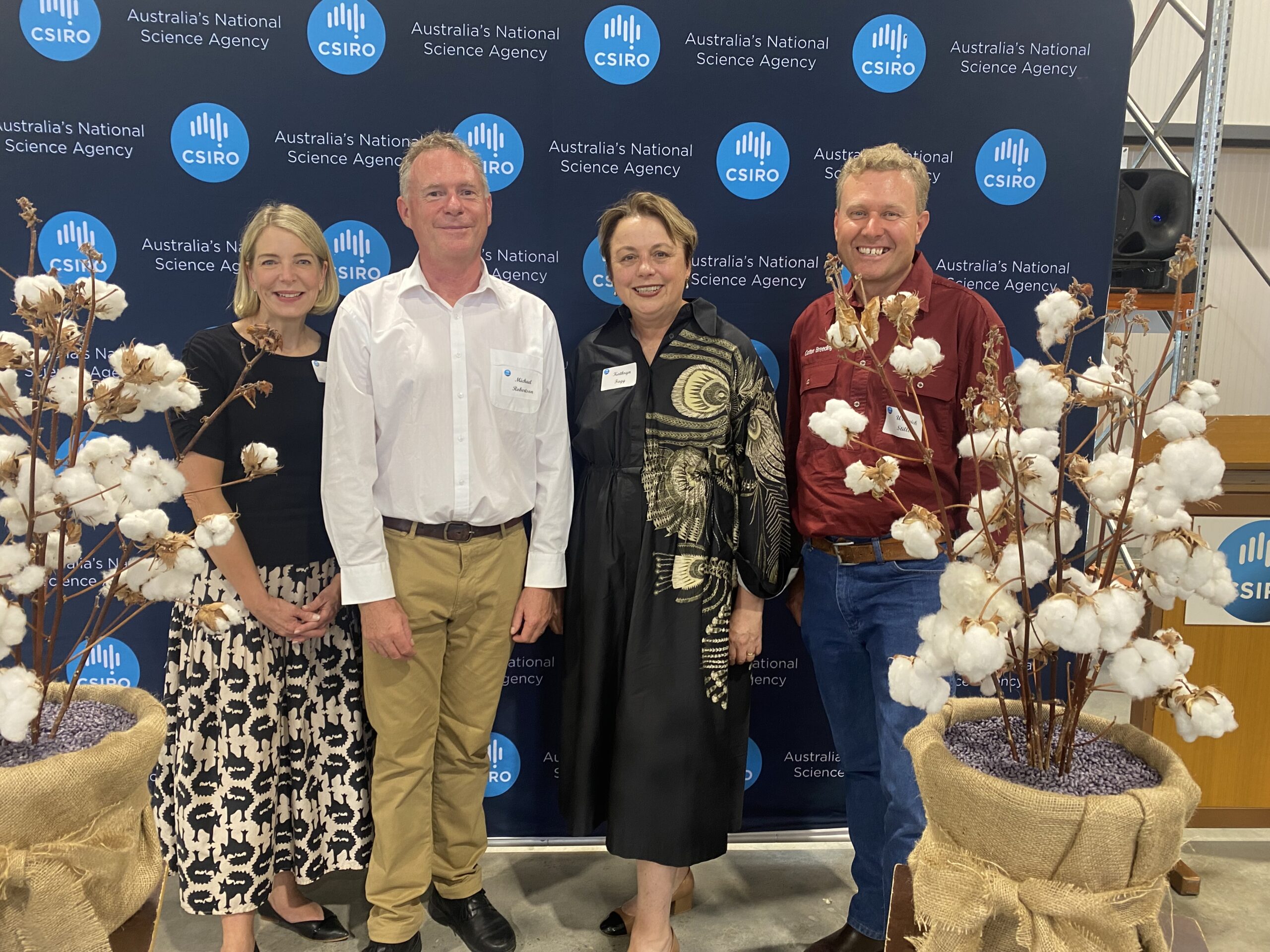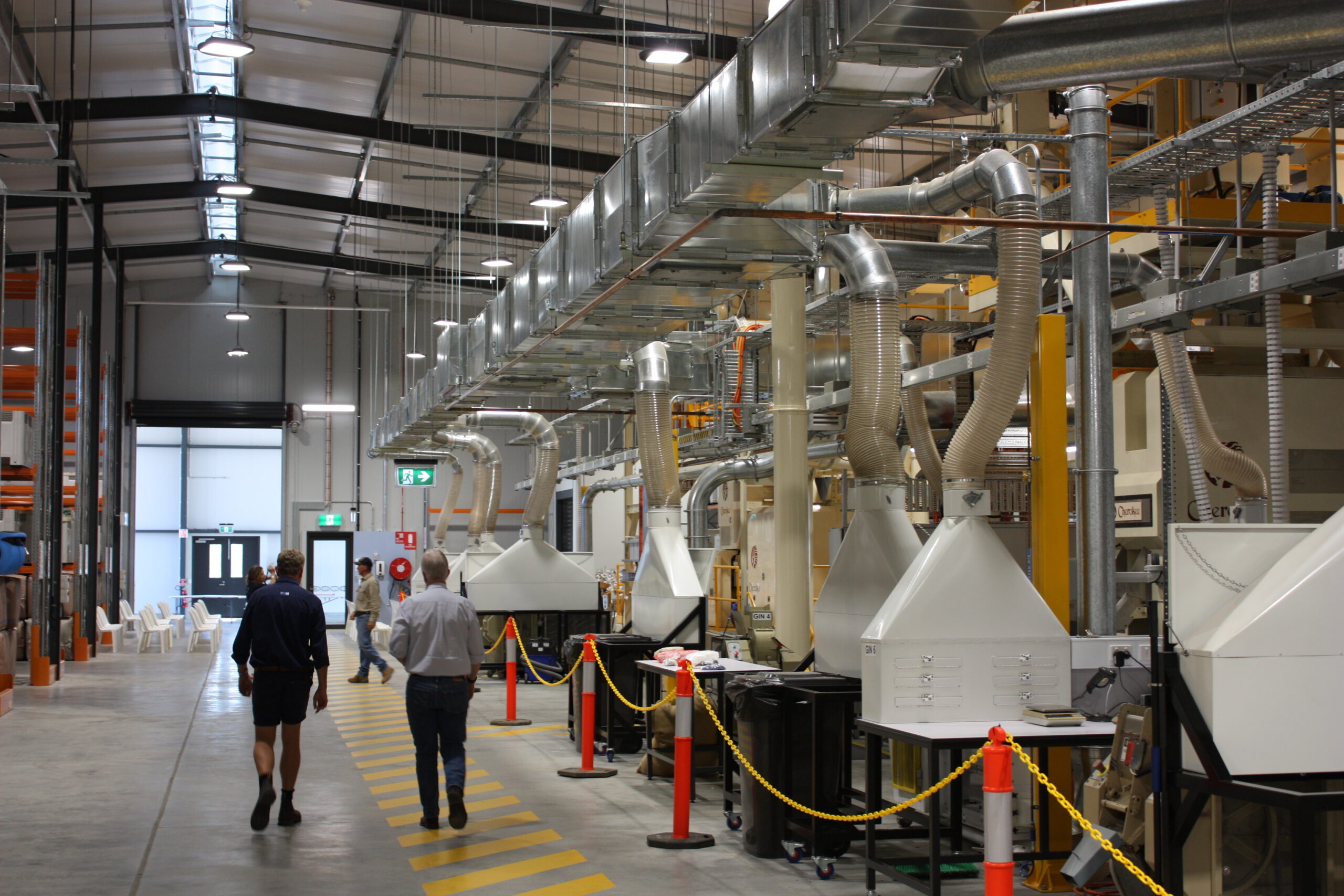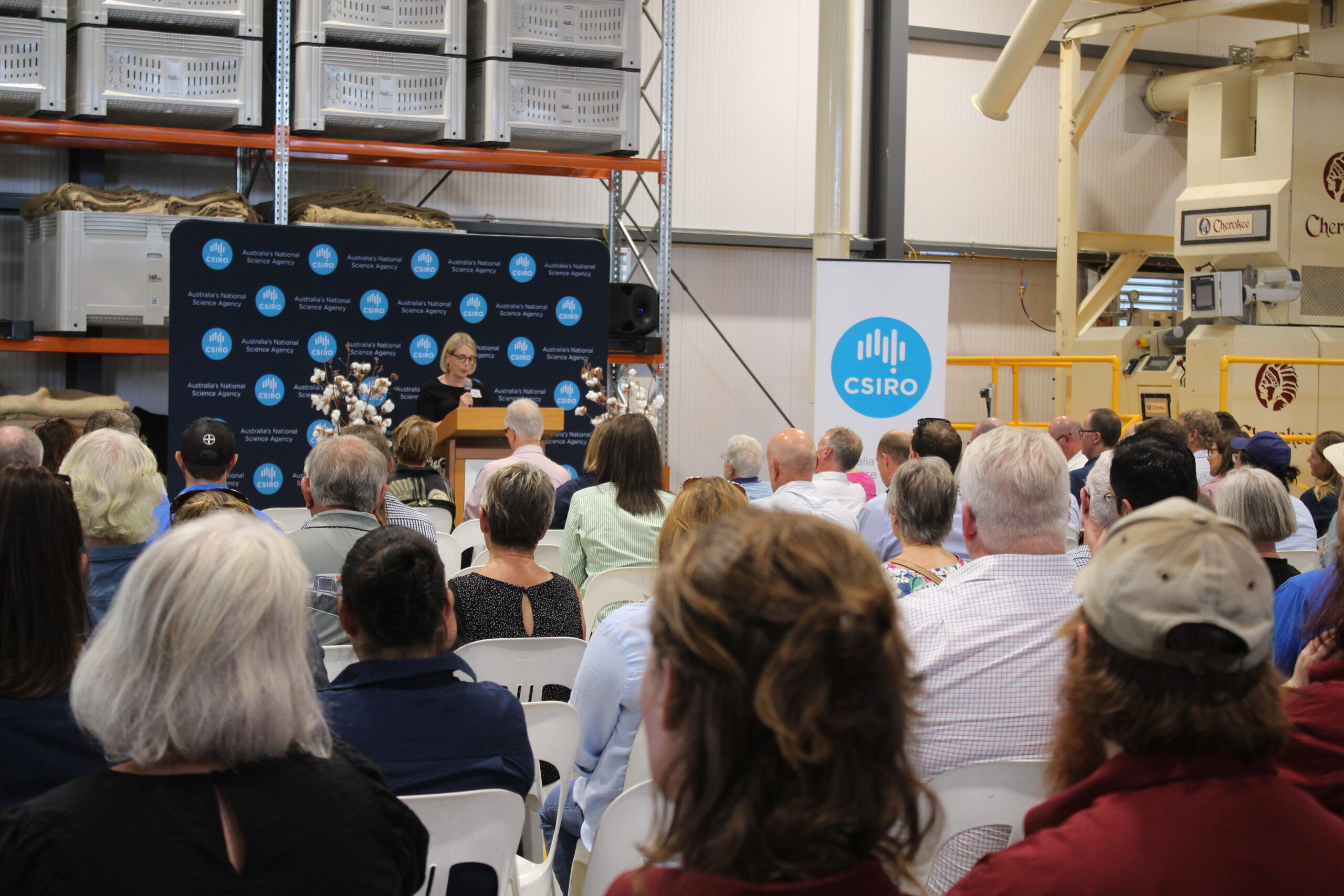There was plenty to celebrate on Tuesday when CSIRO hosted the grand opening of its $25 million upgrade to the Myall Vale site, further cementing the Narrabri region’s reputation as Australia’s hub of cutting-edge cotton research. (Scroll down for photo gallery)
“This is money very well spent,” exclaimed CSIRO board chair and former engineer Kathryn Fagg AO, as the impressive and innovative new buildings and resources were unveiled.
“The decision to invest in this facility recognises the impact we saw…the underlying talent and commitment,” said Ms Fagg.
“I’d like to thank all of our partners for their continued collaboration and support.
“Thanks to the staff for the difference you make on a day-to-day basis.”
The CSIRO Myall Vale facility employs more than 60 people, including internationally-renowned plant breeders, entomologists, agronomists, water and soil scientists.
The huge investment is a good news story for Australian agriculture, but at a local level, it is also a boost for the region’s economy, workforce, and growers in the Namoi Valley, who have formed strong and direct relationships with researchers over the years.
The upgrades include the newly-built Cotton Management Research Laboratory, which allows the precise pre-emptive monitoring of potential insect resistance and the measurement of crop nutritional status for improved management, as well as new cotton breeding areas, and increased storage and processing areas.
The new purpose-built facilities will support ongoing research into water efficiencies and disease resistance in the crop.
CSIRO first established a presence at Myall Vale in 1972 with the opening of the Cotton Research Unit with the NSW Department of Primary Industries, what is now the Australian Cotton Research Institute.
Cotton research was first established in NSW in 1958 with the opening of the Myall Vale Experimental Station.
On Tuesday, scientists, industry leaders and representatives were given the opportunity to tour the upgrades at the site before the grand opening and main event was held in the new cotton processing facility.
A Welcome to Country was delivered by Debbie Combo and a variety of speakers shared their excitement about what the significant investment means for the future, the proud history of research and hard work in the region, and the important role partnerships have played in making cotton the great success story it is today.
Speakers included leader of CSIRO’s cotton breeding program Warwick Stiller, CSIRO Executive Director of Future Industries Kirsten Rose, Cotton Research and Development Corporation Executive Director Dr Ian Taylor, Cotton Seed Distributors Managing Director Peter Graham, CSIRO research assistant John Schwager, CSIRO board chair Kathryn Fagg AO, and CSIRO Site Leader, Sandra Williams encouraged all CSIRO staff to give themselves a pat on the back for their wonderful efforts.
There was a special acknowledgement of attendees Dr Brian Hearn and his wife Pat, along with Craig Patrick and his wife Wendy. They were two of the original CSIRO staff who relocated from the Ord region in Western Australia in 1972 when CSIRO consolidated its cotton research at Narrabri.
Mr Hearn is and world renowned agronomist and pioneer of crop modelling.
Mr Patrick was a research technician in the cotton breeding program under the late Dr Norm Thomson. Both men retired in the mid-90s.
CSIRO’s executive director of future industries, Kirsten Rose said the investment in the expanded facilities demonstrated how committed Australia’s national science agency is to the cotton industry.
“Our cotton breeding work is world-class, and our long-term commitment to the cotton industry, which has been developed over half a century, is now ensured into the future,” Ms Rose said.
“From humble beginnings 50 years ago, 100 per cent of cotton now grown in Australia is a product of CSIRO science.”
Cotton Seed Distributors managing director Peter Graham welcomed the opening of the new facilities saying it was a major boost not just for NSW but cotton growers Australia-wide.
“This increased capacity for the breeding and processing of cotton positions us strongly for growth in the domestic market and for a growing international presence,” Mr Graham said.
“The CSIRO-CSD partnership will grow to new heights as we boost the research effort here at Myall Vale and continue to grow interest internationally in the value of the Australian cotton industry.”
Leader of CSIRO’s cotton breeding program Warwick Stiller said the new facilities reflected CSIRO’s standing as a world leader in cotton research.
“The work our researchers are doing at Myall Vale is globally recognised, from developing pest-resistant cotton to producing more sustainable varieties that require less water,” Dr Stiller said.
“Myall Vale is a unique site embedded with the local industry and community, and our partnerships with industry don’t just deliver huge economic benefits to the community but to Australia as a whole.”
Throughout construction, Dr Stiller has kept the community updated with the project’s progress and kindly taken The Courier on tours to report on different stages of development.
In 2019, the Federal Parliament approved an $18 million plan for the upgrade, and it was later bumped up to $25 million.
“This is a significant investment by CSIRO which provides benefit to the cotton industry, but also importantly for the Narrabri and Wee Waa region,” Dr Stiller told The Courier in 2020.
Stage one was completed in 2020 and includes a plant and equipment workshop that’s more than 1000 square metres in size and 7 metres high, suitable to house large machinery and equipment.
“It’s also been designed so that equipment like a JD7760 picker can be brought in and worked on,” said Dr Stiller during a 2020 tour.
Another outstanding part of stage one is a new underground services corridor that modernises the delivery of services across the site, including power, data, gas and water.
“And that’s all buried 1.5 metres underground,” added Dr Stiller.
In 2021, The Courier reported the second stage, a state-of-the-art laboratory, was up and running at The Australian Cotton Research Institute (ACRI), with CSIRO scientists, researchers and technicians thrilled about their new workspace.
“It’s fantastic,” Dr Stiller told The Courier at the time.
“You’d have to go to a major metropolitan area to find another laboratory close to this.”
The ACRI is a NSW Department of Primary Industries site, but both NSW DPI and CSIRO conduct research at the site.
“It’s great to have this laboratory in a regional area,” said Dr Stiller.
“It shows confidence that CSIRO is looking to underpin the future of the industry.
“It’s looking 10-plus years into the future, not just tomorrow.”
Dr Stiller said the new laboratory was being used for a range of endeavours, such as monitoring insect pest populations, mainly to ensure that they cannot overcome the inbuilt insect protection of the commercial varieties.
“We also do research to get the information so the industry can most effectively manage the nutrition needs of the crops, and we can continue to get the high yields that growers are accustomed to,” added Dr Stiller.
The new equipment and tools in the laboratory have revolutionised the workflow efficiency and safety at the site too.
For example, during The Courier’s lab tour, researchers commented they now have the ability ‘to process 200 nitrogen samples a day as opposed to 36’.
The larger space and number of rooms in the laboratory also allow for greater containment of different experiments.
The final stage involved the development of purpose-built cotton breeding and plant and soil processing facilities.
The grand opening was held in the new Cotton Processing Facilities as attendees and staff were able to marvel at the modern resources.
The multi-million-dollar makeover has transformed some of ACRI’s old, 70s-style infrastructure, and the rejuvenation of CSIRO’s resources will provide greater capacity for research activities, including cotton breeding, the monitoring of BT resistance and cotton nutrition research.
Research activities at the ACRI have played a key role in the development of cotton in both NSW and Queensland and, more recently contributing to the development of the industry in the far south of NSW, northern Victoria as well as northern Australia.
Scientists at ACRI work hard to help the cotton industry achieve a sustainable and profitable future based on productivity and best practice natural resource, disease and pest management.
ACRI has both research and extension programs, and while the emphasis is on cotton, the institute also engages in agronomic and breeding research encompassing summer and winter grain crops, including wheat, canola, chickpeas, soybeans and mungbeans.
Attendees were treated to a delicious barbecue by Rotary following the speeches.


